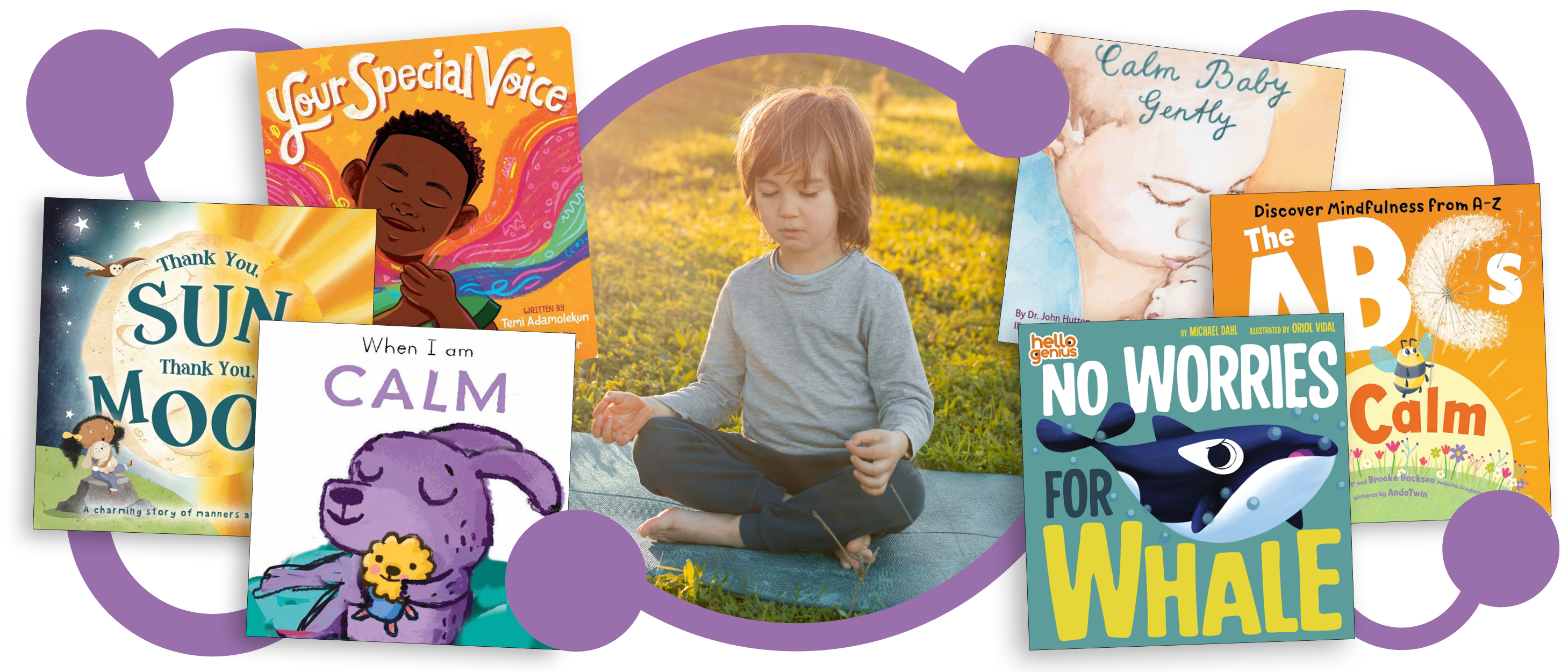Sep 9 2025
Teaching Mindfulness to Toddlers Through Storytime

Thousands of scientific articles are published each year on mindfulness and the practical benefits may surprise you. A study published in Developmental Psychology reported 15% better math scores and 24% less aggressive behaviors in elementary students.
The Importance of Mindfulness for Toddlers
Introducing mindfulness to babies and young children begins with helping them notice and appreciate the present moment. Mindfulness involves being attentive, observing feelings and surroundings, and simply being present. Young children naturally excel at staying in the moment—they aren’t weighed down by the past or distracted by what’s ahead. As you guide them through mindful practices, you may learn alongside them.
Mindfulness meaningfully supports emotional growth and cognitive development, even for toddlers. Practicing mindfulness with young children encourages emotion management, strengthens focus, and nurtures empathy. Early exposure to these skills lays the groundwork for self-regulation, supports emotional well-being, and may help reduce anxiety.
Toddlers are particularly open to new ideas when introduced through playful activities and stories. By weaving mindfulness into daily routines, caregivers can foster present-moment awareness, cultivate emotional intelligence, and help create a calmer, more attentive environment for children to grow and thrive.
Choosing the Right Storybooks for Mindfulness
Choosing storybooks intentionally is essential when introducing mindfulness to toddlers. Prioritize books with simple, rhythmic language, repetition, and soothing illustrations that help calm young minds and draw children into the story. Titles that explore themes such as gratitude, kindness, and emotional awareness are particularly impactful.
Interactive books—like those with tactile elements, songs, or movement prompts—can transform storytime into a full-body experience. Remember, reading can be dynamic: Invite toddlers to move, sing, or act out parts of the story to keep them engaged and support their mindful awareness.
Engaging Toddlers with Mindful Storytelling Techniques
Mindful storytelling goes beyond just reading the words on the page. It involves creating an interactive and immersive experience. Use a calm and soothing voice, incorporate pauses to allow the child to reflect on what they are hearing, and encourage them to think about how the characters might be feeling.
Ask open-ended questions related to the story, such as 'How do you think the character feels right now?' or 'What would you do in this situation?' This keeps the child engaged and helps them practice empathy and emotional awareness.
Incorporating Mindfulness Activities During Storytime
Blending mindfulness activities with storytime enriches the learning experience and fosters calm, focused attention. Begin by weaving in simple breathing techniques, such as inviting your toddler to inhale slowly through the nose and exhale gently through the mouth. Coordinate these breaths with the rhythms of the story—perhaps taking a deep breath when a character pauses or invites reflection. Even a single, intentional breath can introduce a sense of calm and presence, setting a peaceful tone for reading together.
You can further enrich storytime by incorporating additional mindfulness practices, like using soft background music, dimming the lights, or encouraging children to notice sensations in their bodies or the sounds around them as the story unfolds. This helps young children center themselves, builds self-regulation skills, and creates positive, memorable associations with reading.
Explore mindfulness meditations and movement activities offered by trusted sources like Sesame Workshop for extra inspiration and practical examples. These resources provide child-friendly guidance and interactive exercises that support literacy development and emotional well-being, making it easy to create meaningful, mindful moments together daily.
Encourage gentle movement or stretching that connects with the story you’re sharing. During storytime, introducing stretches, yoga poses, or simple movement games helps focus children’s energy, supports gross motor development, and builds essential new skills. These activities also nurture focus, memory, creativity, and the ability to follow directions. Begin with single-step instructions for younger toddlers, and as your child grows, add multiple steps to develop memory and sequencing skills.
Tips for Parents to Foster Mindfulness Beyond Storytime
Storytime is only the starting point—mindfulness can be woven into daily moments. Parents and caregivers have many opportunities to nurture mindfulness in natural and meaningful ways for their families. For example, when your child feels overwhelmed or needs a break, gently guide them to pause and take mindful breaths together. This can help them calm down, reset, and develop self-awareness.
Creating a dedicated “calming corner” with soft pillows, beloved books, and a few comforting items gives your child a special space to recharge when emotions run high. This area becomes a safe retreat where mindfulness tools, like breathing or being still with a favorite story, can be practiced independently or together.
Modeling mindful behaviors is just as important—children often mirror what they see from caring adults. Take time to show gratitude, share how you notice your own feelings, or pause together for a deep breath. Engaging in mindfulness as a family—such as practicing a short evening meditation, sharing what you are grateful for, or doing a soothing bedtime routine—builds consistency and connection. These mindful habits promote a peaceful, supportive home environment, helping children carry these valuable skills into every part of their lives.
Check out these fantastic resources from Sesame Workshop for more mindful ideas!
Posted on Sep 9, 2025

Hey there, I’m Brittany Winans
Brittany started in Spring 2022 and works on maintaining all our marketing, branding, publishing, and social media efforts with our Marketing Manager. If you follow us on social media, chances are you have already seen some of Brittany’s work!





.jpg?width=1200&length=1200&name=Youre%20My%20Little%20Baby%20(A%20Touch-and-Feel%20Book).jpg)

-1.jpg?width=1200&length=1200&name=Happy%20Hippo%2c%20Angry%20Duck%20(A%20Book%20of%20Moods)-1.jpg)





